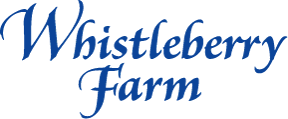Preserving the Tamworth Breed
I raise Tamworths. I believe in preserving and nurturing our food heritage, and that includes the traditional breeds developed over centuries. That said, I would not raise Tamworths if they did not taste fantastic. That is the point, after all.
The Tamworth is an old breed
of naturally lean, bacon-type pig. There is some fat marbling in
the meat, and consequently, excellent flavor. There is some debate
as to their origins, as is often the case with heritage breeds.
They are of English or Anglo-Irish origin, depending on who you listen to
as an authority. The bulk of opinion seems to support the notion
that the original stock came from Ireland, where they were known as the
Irish Grazier, due to their willingness to utilize pasture for a significant
part of their diet.
They were brought to England in the 18th century, where selective breeding resulted in an animal which no longer looked quite as much like a feral pig.
It also gave the breed a name change to Tamworth, the name of the
area and the estate where they were developed into the animal we know
today. They are about the same animal they were then, which
is unusual among domestic pig breeds. They have changed very
little in almost 300 years, and are widely regarded as one of the oldest
breeds of domestic pig.
They escaped most of the rage to “improve” pork in the 19th century by breeding for lard production, which led to the development of absurdly fat hogs. There is a wonderful quote from an agriculturalist of the day, which dismissed them in passing as lacking any real potential for fattening as a lard hog. I don’t think there could be a greater compliment to a breed, since we now have no use for a lard hog, and know how unnecessary the excess fat is. A new push came in recent years to “improve” pork, by breeding for extraordinarily lean meat, and the industry took off in a new direction. The pork resulting from that industry trend was bland, without texture and more than a little boring for my taste. Meanwhile, pork production moved inside of buildings. Producers realized that they could grow a bigger pig faster with the use of sub-therapeutic antibiotics.
During all of this time, while fads swung the industry and the animals
back and forth, the Tamworth changed very little. It remained
a naturally lean and disease-resistant pig, perfectly adapted to pasture
rearing, and foraging for itself for a good part of its diet.
The litters are not large, but the sows have excellent mothering instincts, and raise a high proportion of the piglets they bear.
Happily, they never became the subject of being reared in buildings
in large numbers, as has been the case with other breeds more favored by
commercial growers. They are said to be intolerant of
confinement, which may have served to preserve the breed as it is.
These considerations have also suppressed the development of large numbers
of the breed. It remains a rare breed, and one which is listed
with the American Livestock Breeds Conservancy as being in danger of
extinction. It is, however, popular with a small number of
devoted farmers, particularly in the Midwest.
The breed is considered ideally suited for people who want a hardy pig with
good disease resistance, with enough mothering instinct to give birth
(farrow) outside without help, and with a strong instinct to foster and
protect its piglets. And, they do still graze.
